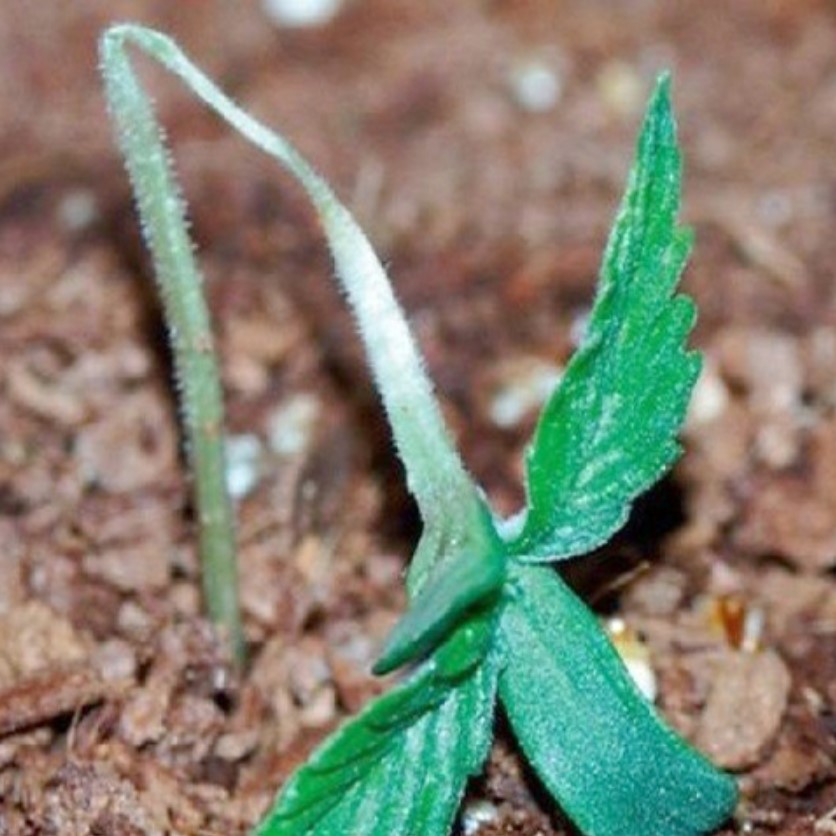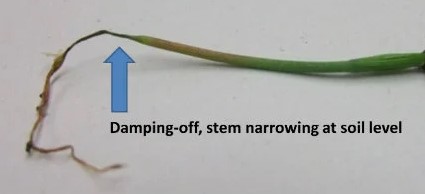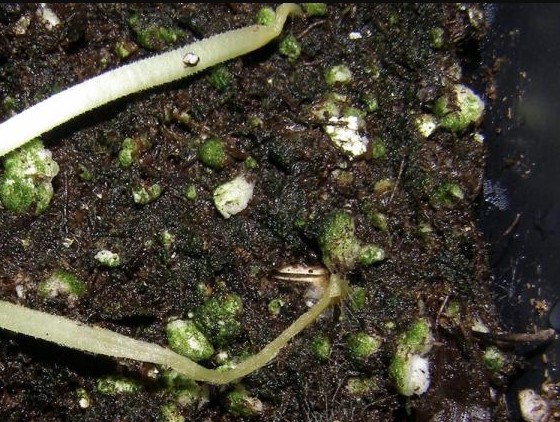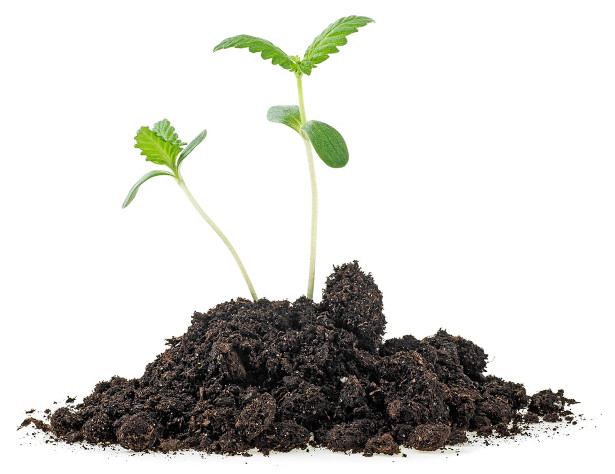Damping off is a common problem that can quickly destroy cannabis seedlings and ruin an entire crop. This fungal infection attacks the roots of the plants, causing them to become damp, wilt, and eventually collapse. However, with proper prevention measures, you can significantly reduce the risk of damping off and ensure the healthy growth of your cannabis plants.
In this comprehensive guide, we will explore the causes of damping off, the symptoms to look out for, and most importantly, effective prevention strategies to keep your seedlings safe. By following these tips and best practices, you can create an optimal environment for your cannabis plants and minimize the chances of damping off.
Table of Contents
What is Damping Off
What Causes Damping Off
Recognizing the Symptoms of Damping Off
Damping Off Treatment
How to prevent Damping Off
Keep Your Seedlings Safe from Damping Off
What is Damping Off
Damping off is a fungal infection that most commonly affects cannabis seedlings during their early stages of growth. The name “damping off” refers to the appearance of the seedlings, which become damp, soggy, and eventually wilt and collapse. This condition is caused by various pathogenic fungi, including Pythium, Phytophthora, Rhizoctonia, and Fusarium.
When the roots of cannabis seedlings become infected, the pathogenic fungi attack and destroy them. Unfortunately, once a seedling is infected, it is difficult to save, and the condition is often fatal. However, by promptly isolating and removing infected seedlings, you can minimize the risk of the infection spreading to the rest of your crop.
What Causes Damping Off
Several factors contribute to the development of damping off in cannabis seedlings. By understanding these causes, you can take proactive measures to prevent the infection from occurring. The following are the main causes of damping off:
Overwatering
One of the primary causes of damping off is overwatering. While cannabis seeds require moist soil to germinate, excessive watering can lead to waterlogged soil, creating the perfect environment for fungal pathogens to thrive. It is essential to strike a balance and ensure the soil is damp but not soaked.
Poor Drainage
Inadequate drainage in pots or trays can also contribute to damping off. If water cannot properly drain from the containers, the soil may become waterlogged and increase the risk of fungal infection. Ensure your growing containers have sufficient drainage holes to prevent excess water from accumulating.
Humid Climate
High humidity levels can create favorable conditions for damping off. Although cannabis seeds require high humidity for germination, excessively humid environments can encourage the growth of fungal pathogens. It is crucial to maintain appropriate humidity levels for each stage of your cannabis plants’ growth.
Low Soil Temperature
A combination of high moisture content and low soil temperature creates an ideal environment for fungal growth. To prevent damping off, it is important to maintain a comfortably warm temperature during the early stages of plant growth. Consider using heating mats or maintaining a controlled indoor environment to ensure optimal soil temperature.
Infected Soil and Compost
Using soil or compost that is already infected with fungal pathogens can introduce damping off to your cannabis plants. It is crucial to select high-quality soil or compost that is free from pathogens. If you choose to create your own soil mix, ensure it is pasteurized to eliminate potential pathogenic growth.
Crowded Seedlings
Seedlings that are grown too closely together are at a higher risk of damping off. When the roots of seedlings are compacted and in close proximity, it increases the likelihood of infection spreading rapidly. To prevent damping off, it is best to germinate seeds in individual containers or provide adequate spacing between seedlings.
Infected Seeds
Using low-quality or infected seeds can introduce damping off to your crop. It is important to source high-quality seeds from reputable sellers to minimize the risk of infection. Avoid using seeds from unknown or unreliable sources as they may already be infected.
Seedling Stress
Seedlings are particularly vulnerable to stress and infection due to their weak immune systems. It is crucial to provide a stress-free environment and optimal growing conditions for your seedlings. By ensuring proper lighting, temperature, and nutrient levels, you can strengthen their immune systems and reduce the risk of damping off.
Recognizing the Symptoms of Damping Off
Damping off manifests in various symptoms, which are similar to those of overwatering. It is important to be able to recognize these symptoms early to take prompt action. The following are common symptoms of damping off:
1. Seedlings appear soaked, wilted, and limp.
2. The lower stem may show signs of discoloration.
3. Seedlings collapse from the base and fail to thrive.
4. Brown and rotten roots are visible upon inspection.
5. Mold growth may be present on the soil surface.
*It is worth noting that damping off can occur in two forms: pre-emergent damping off, where the seedling fails to sprout, and post-emergent damping off, where the seedling sprouts but eventually collapses and dies.
Damping off Treatment
Unfortunately, there is no cure for seedlings affected by damping off. However, you can respond effectively to minimize the damage and prevent the infection from spreading further. Here are some steps you can take if you notice damping off symptoms:
Isolate Infected Seedlings
As soon as you identify seedlings showing signs of damping off, it is crucial to remove them from the growing area and isolate them. By separating infected seedlings, you can prevent the spread of the infection to the rest of your crop. If the isolated seedlings recover, you may reintroduce them to the grow area. However, if they continue to deteriorate, it is best to discard them to protect the remaining plants.
Improve Air Circulation
Enhancing airflow and ventilation in your grow space is essential to reduce the chances of the fungal infection developing further. Proper ventilation lowers humidity levels, making the environment less favorable for fungal growth. Consider using fans or installing a ventilation system to promote air circulation around your plants.
Remove Infected Soil
Promptly remove and dispose of any infected soil or compost to prevent the spread of the fungal infection. While it is possible to sterilize soil for reuse, it is generally safer to dispose of infected soil and start fresh. Sterilization techniques can be challenging and require expertise to ensure all pathogens are effectively eliminated.
Adjust Potting Mix
Depending on the causes of damping off, you may need to adjust your potting mix to create a healthier growing environment. Choose a well-draining substrate that allows excess water to flow freely and prevents waterlogging. Additionally, consider incorporating beneficial additives such as mycorrhizal fungi or lactic acid bacteria to enhance plant health and protect against pathogenic fungi.
How to prevent Damping Off
Prevention is key when it comes to damping off. By implementing proactive measures, you can significantly reduce the risk of fungal infections and promote the healthy growth of your cannabis seedlings. The following prevention strategies are effective in preventing damping off:
Use Clean Pots and Trays
Maintaining cleanliness and hygiene in your growing containers is crucial to prevent the introduction of pathogens. Before starting a new growing cycle, thoroughly clean and sterilize pots and trays to eliminate any potential contaminants. Pasteurizing containers with hot water or using specialized cleaning products can help ensure a clean environment for your seedlings.
Water Appropriately
Proper watering practices are essential to prevent damping off. While it is important to keep the soil moist during the germination phase, avoid overwatering. Only water when the top layer of soil becomes dry to the touch, and ensure the soil is damp but not saturated. Overwatering creates ideal conditions for fungal pathogens to thrive.
Manage Humidity
Maintaining appropriate humidity levels is crucial to prevent fungal infections, including damping off. During the germination phase, high humidity is necessary for successful seedling emergence. However, as the seedlings grow, gradually decrease humidity levels to reduce the risk of fungal growth. Monitoring humidity levels using a hygrometer can help ensure optimal conditions for your plants.
Sow Seeds Thinly
Proper spacing between seeds is essential to prevent overcrowding and reduce the risk of damping off. When sowing seeds, ensure they are placed at an appropriate distance from each other, allowing sufficient airflow and preventing the spread of infection. If using communal trays or containers, avoid overcrowding by placing seeds at least 2 inches apart.
Apply Beneficial Bacteria
Applying lactic acid bacteria to your growing medium can help prevent damping off. These beneficial bacteria create a protective environment for the roots and suppress the growth of pathogenic fungi. While this step may not be necessary for small-scale home grows, it can be beneficial for larger operations aiming to maximize crop yield and minimize the risk of fungal infections.
Inoculate With Mycorrhizal Fungi
Mycorrhizal fungi have a symbiotic relationship with plant roots and can help protect against damping off. These fungi colonize the root systems of plants and improve nutrient uptake, while also defending against pathogenic fungi. Incorporating mycorrhizal fungi into your growing medium can enhance plant health and increase resistance to fungal infections.
Leverage Trichoderma
Trichoderma is another beneficial fungus that can improve plant growth and provide defense against pathogens. Similar to mycorrhizal fungi, trichoderma breaks down nutrients in the soil and enhances nutrient availability for plants. Adding trichoderma to your substrate can help prevent damping off and promote overall plant health.
By implementing these prevention strategies, you can create a healthy and resilient environment for your cannabis seedlings, minimizing the risk of damping off and ensuring successful cultivation.
Keep Your Seedlings Safe from Damping Off
While damping off can be a devastating problem for cannabis growers, with proper prevention measures, you can significantly reduce the risk and keep your seedlings safe. By understanding the causes, recognizing the symptoms, and implementing effective prevention strategies, you can create optimal conditions for your cannabis plants to thrive.
Remember to maintain cleanliness, provide proper ventilation, and avoid overwatering. Choose high-quality seeds and growing mediums, and consider incorporating beneficial bacteria and fungi to enhance plant health. By following these guidelines, you can minimize the risk of damping off and maximize the success of your cannabis cultivation endeavors.
Conclusion
Damping off can be a frustrating and destructive problem for cannabis growers. However, by understanding the causes, recognizing the symptoms, and implementing effective prevention strategies, you can significantly reduce the risk and keep your seedlings safe. Remember to maintain cleanliness, proper watering practices, and optimal humidity levels. Incorporate beneficial bacteria and fungi into your growing medium to enhance plant health and protect against pathogenic fungi. By following these guidelines, you can create a healthy and thriving environment for your cannabis plants, ensuring successful cultivation.






